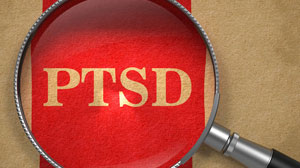During the last decade the use of Neurofeedback techniques to achieve a better athletic performance has been a booming subject. More and more athletes use mental training each day as a means of achieving the ultimate competitive edge. One of the most well-known examples is the Italian football team that won the 2004 World Cup final in Germany against France. To prepare for the tournament some of the Italian footballers used neurofeedback techniques to train focus, concentration and ‘getting into the zone’. The Wall Street Journal also reported how neurofeedback helped beach-volleyball stars Kerri Walsh-Jennings and Misty May-Treanor to win the London 2012 Olympic gold medal. These are some of the many examples of the current success of brain training to enhance sports performance.
Neurofeedback (EEG biofeedback) holds potential for retraining brainwave activity to enhance optimal performance in athletes in various sports. Neurofeedback has been shown to have potential for quieting the mind to improve performance in archery, for example. It can also be used to improve concentration and focus, to improve cognitive function and emotional control following concussions and mild head injuries, and it has untapped potential to increase physical balance in gymnastics, ice skating, skiing, and other areas of performance. Clinical examples are provided on the use of neurofeedback to improve physical balance and controlled research is called for.
Author: admin_chiro
Neurofeedback for Depression
Compelling research evidence exists that there is often a neurophysiological basis for depression, particularly in people with a family history of depression. Neuroscientists have discovered a particular brainwave pattern that allows us to identify individuals with a biological predisposition for developing depression. This biological marker appears to be very robust (Davidson, 1998a, b), having been replicated many times in brain mapping research utilizing quantitative electroencephalograms (QEEG) and other forms of neuroimaging. It has even been found in infants of mothers with a history of depression, compared with babies of women without a depression history (Reference: Dawson, Grofer Klinger, Panagiotides, Hill, & Spieker, 1992; Dawson, Grofer Klinger, Panagiotides, Spieker & Frey, 1992).
The left frontal area of the brain is associated with positive emotions and approach motivation, which is a desire to be involved with other people. The right frontal area of the brain is more associated with depression and fear, accompanied by motivation to withdraw from and avoid other people. When there is more slow brainwave activity in the left frontal area, this part of the brain is more inactive and the right frontal area is more dominant. Such a person is predisposed to become depressed more easily, to withdraw from other people, and to be anxious. This may occur because of heredity (family history) or because someone has had a concussion or mild head injury in the left frontal area which produced the slowing.
Part of a brain map from two different people is reproduced below. The map on the left is from a person with a long history of depression. You can clearly see in the left frontal area (which is colored orange and yellow) that there is an excess of slow, alpha brainwave activity. This is the pattern that has been classically associated with a vulnerability to depression. In contrast, the brain map on the right displays how a relatively normal map would look, without any excess or serious deficit.


It is interesting that research has found that antidepressants do not correct the type of brainwave pattern that we see above on the left. Thus, medication treatment for depression appears to still leave intact the biological predisposition for becoming more easily depressed when unpleasant life circumstances come along. There is also new evidence that has found that on average, antidepressant medications only have an 18% effect over and above placebo effects (Antonuccio, Danton, DeNelsky, Greenberg, & Gordon, 1999; Kirsch, Scoboria, & Moore, 2002; Kirsch & Sapirstein, 1998), and medication may only be mildly effective in treating anxiety as well (Antonuccio et al., 1999). In contrast, we know that psychotherapy for depression compares favorably with medication in short-term follow-ups (DeRubeis, Gelfand, Tang, & Simons, 1999) and appears to be superior in long-term follow-ups (Antonuccio, Danton, & DeNelsky, 1995; Hollon, Shelton, & Loosen, 1991).
Neurofeedback treatments for depression (Baehr, Rosenfeld, & Baehr 1997, 2001; Hammond, 2000, 2004) appear very promising not only in bringing relief from depression, but in modifying the underlying biological predisposition for becoming depressed. Neurofeedback focuses on retraining the brain, for example, reversing the frontal brainwave asymmetry, with the goal of producing an enduring change that does not require people to remain on medication indefinitely. Training often requires about 20 to 22 sessions.
Written by D. Corydon Hammond, PhD Professor & Psychologist, Physical Medicine & Rehabilitation University of Utah School of Medicine.
This article was taken from the website of The International Society For Neurofeedback & Research. For a full list of references on this article, you can visit the original article here.
Neurofeedback Helps Cellist Improve
“Practice makes perfect,” the saying goes. Optimal performance, however, can require more than talent, effort, and repetition. Training the brain to reduce stress through neurofeedback can remove barriers and enhance one’s innate abilities.
An article in the journal Biofeedback presents the narrative of a young cellist who was able to realize the potential of his talent and eliminate debilitating migraine headaches. This case study is part of a special section in the Spring 2012 issue focusing on optimal functioning.
Enhancing people’s performance in business, performing and visual arts, academia, and sports can be realized through biofeedback and neurofeedback training. Tools of stress reduction, mental imagery training, psychology, and psycho-physiological technology are combined to help people reach their goals.
The author and practitioner in this case study has combined her work and study in the fields of theater, social work, and neurofeedback. In her practice, she coaches clients to achieve outstanding performances. For example, a singer can better understand and interpret a musical selection, allowing that singer to better convey the emotion of the music, resulting in a noticeably improved performance.
William, the young musician, sought relief from migraine headaches that were affecting him almost daily. His therapy, however, did not take the approach of treating the headaches, but of focusing on William as a person and as a performer. By improving his functionality, working through moments of obsessiveness, self-criticism, fear, and anxiety, the headaches could also be resolved.
William’s therapist conducted neurofeedback — using sensors to read his brainwaves, analyzing these with NeuroOptimal™ software, and then giving feedback to the brain through a visual display and sound. With this information, the brain can learn to self-correct. This technology assists in getting people past that moment when they obsess over whether they have given the correct answer or hit the right note.
NeuroOptimal feedback, guided imagery, and coaching about decisions regarding his music helped William move beyond the difficulties he encountered. During his senior recital at his college, he was able to give a relaxed, confident performance that was met with a standing ovation.
Full text of the article, “William’s Story: A Case Study in Optimal Performance,”
Biofeedback, Volume 40, Issue 1, Spring 2012
What IS Neurofeedback?
What exactly is Neurofeedback and see how it can
help children with ADHD type symptoms
Video: Improving Brain Function
Neurofeedback training allows the central nervous system to function better.
Brain Training for Post-Traumatic Stress
This article was taken from TV station KENS 5 in San Antonio
by Sarah Lucero / KENS 5
Dr. Ron Swatzyna remembers Nov. 5, 2009, well. That day, Major Nidal Hassan opened fire at Fort Hood, killing 13 people and wounding dozens of others. But all Swatzyna could think about was what must have been going on inside Hassan’s mind
“I think it finally finally set him into a secondary PTSD,” said Swatzyna, referring to the post-traumatic stress disorder likely brought about during Hassan’s military service. “He had no defense mechanisms to calm himself. And he had issues with anger.”
Incidents like that one in Killeen, Texas, have driven the Houston-based doctor and a growing number of specialists around the country to find a treatment for post-traumatic stress disorder that works.
For these and other conditions, there are a growing number of medical experts who say they have discovered a groundbreaking treatment that doesn’t involve taking more pills or traditional approaches. It involves stimulating the brain in a way that’s never been done before.
The symptoms for PTSD include anger, nightmares, flashbacks and difficulty concentrating. This is the result of being bombarded by images of war.
“Part of it is an exercise in focus and attention,” says Swatzyna, referring to neurofeedback therapy. It’s a cutting-edge approach to treating PTSD and other brain disorders.
“The first part of neurotherapy for PTSD is to teach the brain to be calm and stable. The second part is to allow the brain to access and resolve the traumas,” says Susan Othmer, the clinical director of the EEG Institute in California.
Dr. Siegfried Othmer and Susan Othmer have been involved with neurofeedback since 1985. What got them involved initially was their son’s seizure disorder. The neurotherapy training was life-transforming for him, and inspired them to continue developing neurofeedback therapy and to the promote its public acceptance.
Neurofeedback therapy is essentially brain training. It’s been around for some 30 years, and is now gaining acceptance as a way to treat everything from ADHD to anxiety and PTSD disorders by teaching the brain to self-regulate better.
Through a set of mind exercises and even video games, the patient learns to control his brain output or brain wave activity.
Mark Schell is one of Ron Swatzyna’s patients. He treated the 18-year-old’s inability to concentrate or sit still. Schell’s grades suffered as a result.
At Swatzyna’s office, electrodes were attached to Schell’s scalp to listen in on his brain wave activity.
“The one on top is his good brain waves. I want him to make more,” says Swatzyna, pointing to the electroencephalogram, or brain wave activity being recorded real-time onto a computer screen.
“I’m telling him to stop making the dysfunctional ones. All he knows is I’ve always told him get these lines nice and straight.”
Swatzyna also puts Schell through video game tests. One is a car racing game in which the goal is to make the car go as fast as possible and stay on the track. But there is no joy stick or controller. Schell controls the car’s movements solely with his mind.
“The brain picks up and learns what are nice waves,” says Swatzyna.
The goal in the games is to make Mark’s brain waves line up with what is determined to be normal brain wave function or frequencies. It can take a few weeks to a few months to get good at it.
In just six months, Mark says he’s seen an enormous difference. “I’ve gone from academic probation to making almost honor roll,” he says proudly.
“After two weeks, I actually started sleeping better. And to where, even if I had a nightmare, I got a drink of water and went back to bed. The future actually has some hope to it now,” says Iraq war veteran, Andrew Szabowski who underwent neurotherapy for PTSD through a foundation called, Homecoming 4 Veterans.
“Where does the resolution lie for PTSD? It means decoupling that body memory from the historical memory. That is what we do with neurofeedback,” says Dr. Othmer.
“I don’t know how or why it just works,” says Szabowski.
“I just thought it’d be another failure, but this is the real deal,” says Schell of his treatment.









